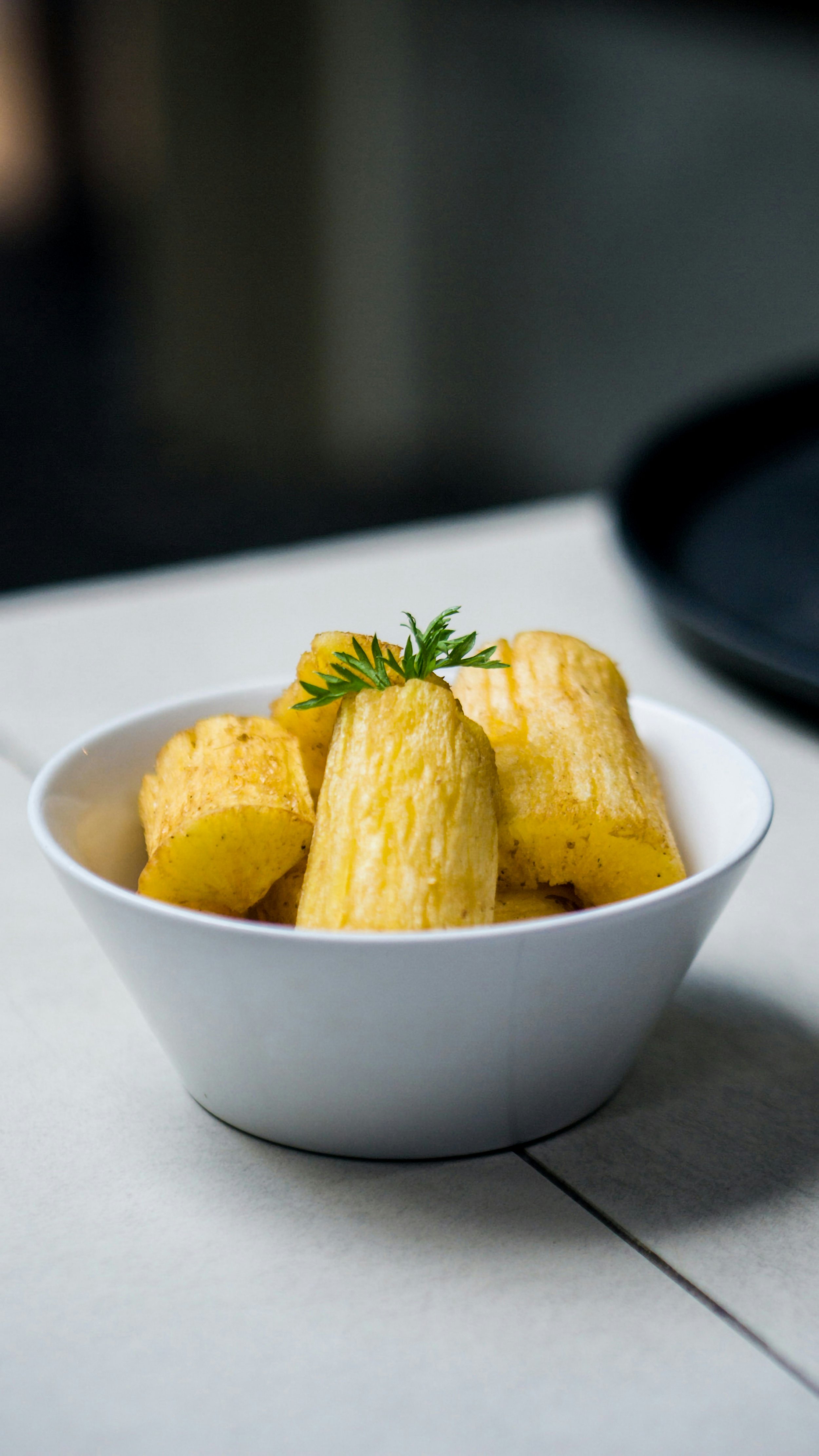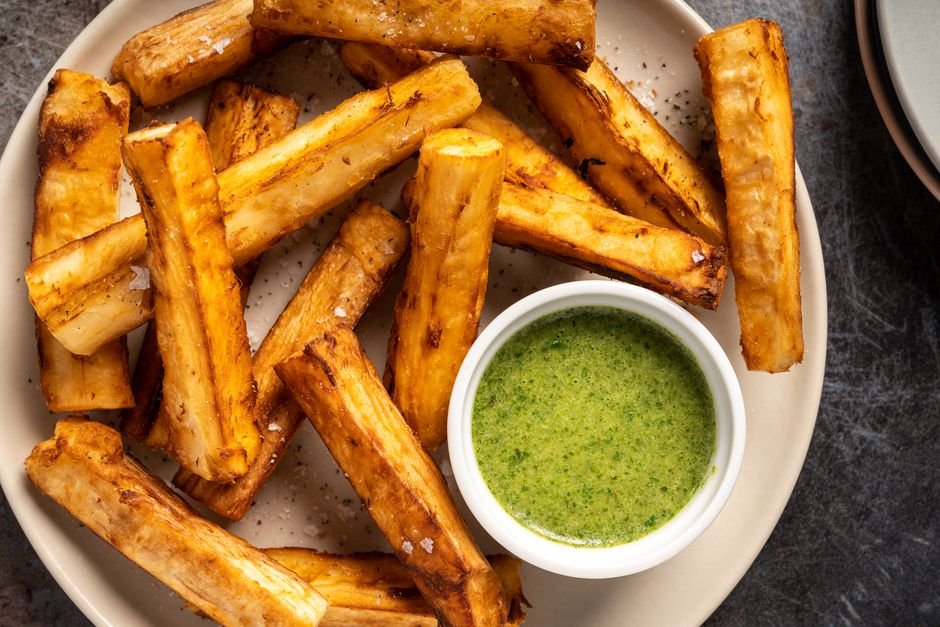Cooking tips
Raw cassava contains cyanide, which is toxic to ingest, so it is vital to prepare it correctly.
Treat yuca the same way you would potatoes; Cover with cold water, season with salt, bring to a boil then simmer for about 20 minutes, it is ready to eat when the flesh is tender. You can also make cassava cake by following the same method.
Boiled cassava is very tasty simply served in puree with a filet of extra virgin olive oil. You can also sauté onions, spinach and mushrooms to pour over the cassava for a complete meal.
Another popular use for yuca is fried in medium size stick; That is always delicious sparkled with some thyme & rosemary salt or served with a dip.
Peel it. The peel of cassava root contains most of its cyanide-producing compounds, so it’s a good idea to discard it before cooking and eating the vegetable.
Soak it. Soaking cassava by submerging it in water for 48–60 hours before cooking it may reduce its content of harmful chemicals.
Cook it. Since harmful chemicals are found in raw cassava, it’s essential to cook it thoroughly before eating, for example by boiling, roasting, or baking it.
Pair it with protein. Eating protein along with cassava may be beneficial, as this macronutrient helps rid your body of toxic cyanide.
Maintain a balanced diet. You can prevent adverse effects from cassava by including a variety of foods in your diet rather than relying on it as your main source of nutrition.




